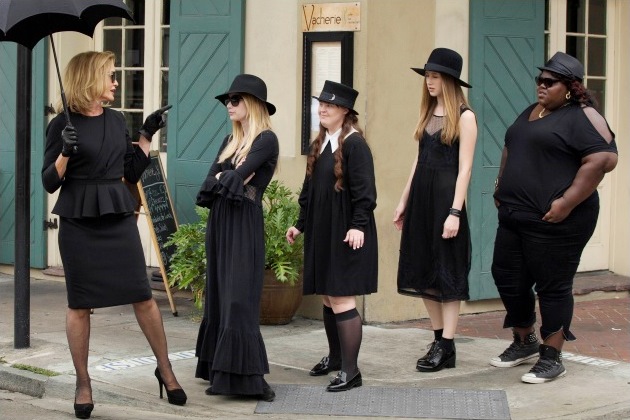WOMEN: The powerful witches of American Horror Story: Coven do much more than cast spells.
By Antonio Serros, Staff Writer
Just in time for Halloween, American Horror Story returns with witches so wicked they make the likes of The Craft’s divinely psychotic Nancy look like a placid schoolgirl. Divinely psychotic isn’t that far of a departure from the previous season—Asylum—with the insidious, benignly benevolent Sister Jude’s incessant thirst for omnipotence. In this season, actress Jessica Lange leaves behind worn-out Sister Jude and takes on the role of Fiona Goode: supreme witch and maven of madness.
When writing television shows, I imagine most producers ponder the same question Katy Perry asks herself while composing songs: “What’s the most stereotypical, marketable archetype I can use that will sell, sell, sell?” Fortunately for us, Ryan Murphy (the creator of American Horror Story) is not afraid to redefine the monotonous television tropes.
From Murder House to Asylum and now Coven, Murphy’s gang of girls shine more prominently than The Big Bang Theory’ s ditzy blonde or Pretty Little Liars’ extended high school metaphor.
The star of Murphy’s latest masterpiece, Fiona Goode, is a clever concoction of a few blonde hairs of cunning intuition, equal parts vice and virtue and a sprinkle of psychosis.
In the premiere episode aptly titled “Bitchcraft,” Fiona returns to Louisiana to rescue her daughter’s failing academy for “exceptional” young ladies. Upon arriving, the neoteric Joan Crawford puts her failure of a daughter in her place, declaring, “I’m Fiona Goode. I’m in charge everywhere.” The dark debutante, with lips pursed, quickly fulfills her title as the “Supreme,” flicking young witches against walls and exhibiting her unparalleled prowess of both mind and magic.
While the head witch may suffer the dolorous task of aging, she lets the souls of men cascade down her throat like she might a fine glass of chardonnay. The camera pans up at a distorting angle revealing Fiona’s rejuvenated reflection in her mirror of mortality.
I could practically hear Jessica Lange’s name being inscribed on an Emmy as she strutted through downtown New Orleans with her procession of gothic predecessors. She preached the gospel that “When witches don’t fight, we burn,” instilling within them not only ideals of defense, but female empowerment. Only benefits can come from listening to the idly regarded Fiona, because she’s got the Goodes.
From Fiona’s snappy one-liners to glares of annoyance, the show finds an equilibrium between humor and macabre. Standing firm in her petite, patent pumps, it is Fiona Goode that resurrects television’s dying image of feminine power and grandeur. After all, she is Fiona Goode and she is in charge everywhere.
Photo courtesy of www.pastemagazine.com

